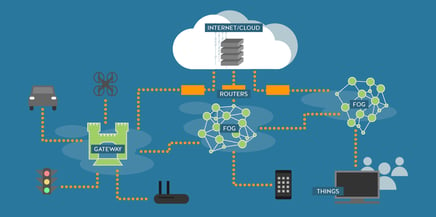Let’s bring your head out of the clouds and into the fog. What exactly is fog computing?
 Fog computing was coined by Cisco. It refers to the edge of an enterprise’s network. This is all things IoT. Also known as fogging or decentralized computing, this form of computing brings together data source and the cloud in the most logical and efficient way.
Fog computing was coined by Cisco. It refers to the edge of an enterprise’s network. This is all things IoT. Also known as fogging or decentralized computing, this form of computing brings together data source and the cloud in the most logical and efficient way.
The most popular application of fog computing right now is in smart streets, smart homes, and software-defined networks. The goal of fog computing is to improve the efficacy of local and cloud data storage. It reduces the amount of data needed to be sent to the cloud. This boosts data analysis efficiency and the security of IoT.
How Does It Work?
Edge devices within an enterprise network don’t typically have the ability to process data the way that the cloud does. There is no room for machine-learning or reporting. So how is it done? We can send it to the cloud but the time it takes to analyze in the cloud and return the results is not fast enough to provide actionable data.
The fog brings edge devices and the cloud closer together. In this environment, processing is done in a data hub in a smart device, router, or gateway. This reduces the time it takes for data to be analyzed. Fog complements cloud computing it does not replace it. “Fogging” enhances cloud computing by bring it a closer to the edge devices for efficiency in passing data back and forth. These smart hubs can be located within the “smart devices” and independently determine what info needs to be sent to the cloud versus local analysis.
What’s it good for?
Fogging is good for a lot of things but the most obvious and effective use is with the Internet of Things (IoT). These devices are typically hosted in the cloud and with that comes massive amounts of transmitted data. Fog computing reduces bandwidth utilization by reducing the mass amounts of data being transferred back and forth from the cloud. These devices determine automatically what is best suited for the cloud or for their “smart hub”. Essentially, speeding up IoT devices and improving the flow of information on a network.
If you liked this article, drop us a comment on how you are integrating IoT into your business! We would love to chat!
